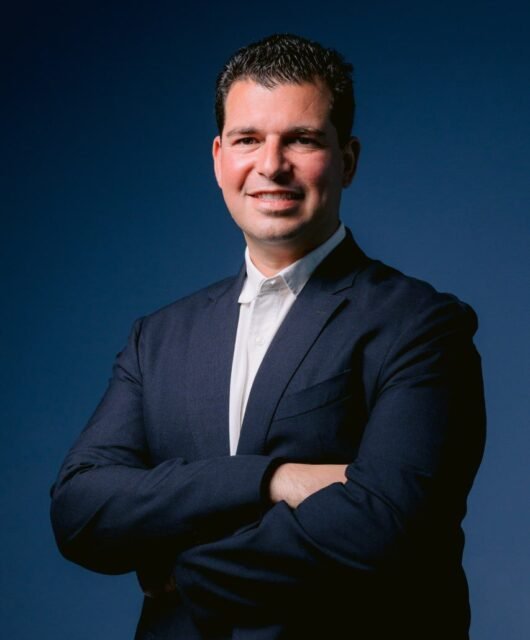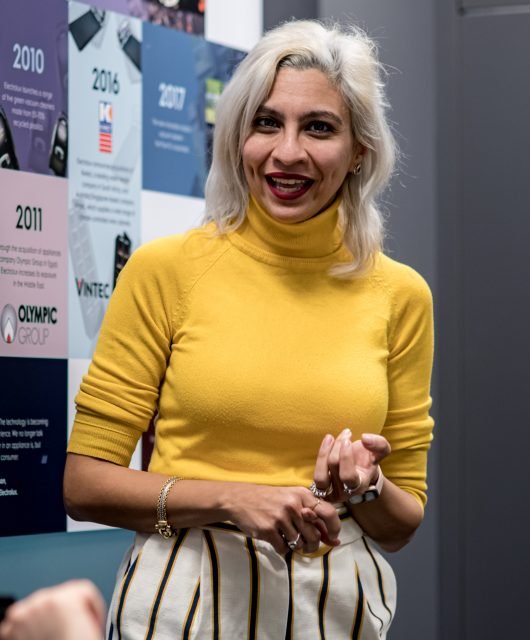The Next Generation Of Content Creators Have Captivated The Masses, By Rise Studios’ Diana Baddar
By: Diana Baddar, Managing Director for Digital Content and Development, Rise Studios
Diana Baddar is the Managing Director for Digital Content and Development of Rise Studios, an entertainment company driving investment in content throughout the Middle East and North Africa markets. Diana drives the digital content strategy for Rise Studios, by partnering with the group companies to build and enhance their digital storytelling and discovering regional talent. She will bridge the gap between traditional and new media and accelerate the potential of digital storytellers.
It seems like everywhere we look, a new platform is springing up, taking advantage of our hunger for content in all its forms. Consumption continues to grow, and it wasn’t just the pandemic that brought it on, this has been an ongoing phenomenon for the past decade. Let’s rewind to 17 years ago and start with YouTube. It started with a video at the zoo and took on a life of its own. It propelled people who had ideas, tips, stories to tell from places like their bedrooms all the way to full-fledged studios to share their passion for content making with audiences who were hungry to watch. It was a blank canvas for storytellers who could build audiences based on authenticity. The consumption of YouTube content continued to grow and became the springboard for a lot of digital stars who either progressed into the more traditional linear space; think Lily Singh, or those who decided that digital platforms were there home; think Mr. Beast. Global phenomena aside, let’s talk about our local talents that have reached this level of stardom. Think of Noor Stars, Mo Vlogs, AbuFlah and so many more that have made a name for themselves on and off digital platforms. These three creators have over 58 million subscribers and 9.3 billion views on YouTube alone.

Remember when Egyptian cinema started? Probably not… but you do know that it was the hotbed of creativity and the start of a movement for content that would travel across the region, fulfilling a very big appetite for entertainment. Then came the Syrian and Kuwaiti content that filled our TV screens, telling stories in a more localized manner, touching upon the lives of the Levantine and GCC markets. This went on for decades, before digital platforms became a thing, before eyeballs started shifting away from the TV screen to our mobile devices where we met the likes of Hayla Ghazal, Omar Hussein, Temsa7 and many new characters. They provided us a more personalized experience where we could interact with these personalities via likes, comments and shares. We subscribed to these channels so we could interact with people who looked like us, thought like us, and actually spoke to us. That was just the beginning and YouTube was the initiator of the magic of digital platforms, revolutionizing how we consume content.
The rise of YouTube was a wake-up call, not only for traditional media players, but even for other platforms that were rising at the same time; remember when Facebook was created so we can connect with family and friends? Facebook slowly developed to become yet another home for creators to make videos and express themselves without gatekeepers. Instagram followed shortly thereafter, and another class of creators emerged; it wasn’t only about posting pretty pictures, it became the home of short video content that would appeal to viewers who wanted to watch shorter snackable content. Fast-forward a few years later, and TikTok rules the digital screens of Gen Z, satisfying the desire for even shorter content, and creators that can rack up millions of views on a Tortilla Challenge or a Lip Sync Challenge. Many thought these short-form content platforms were nothing but a blip on the radar and that eyeballs that were racking up billions of watch time will gravitate back to TV. That is unlikely to happen, not when TikTok boasts numbers of 1 billion active monthly users, YouTube states it has 2.5 billion active monthly users and Instagram is accessed by 2 billion monthly active users; something needs to change drastically in the traditional media landscape.
Young content consumers would go on to become content creators in their own right, talking about financial topics, parenting hacks or even the climate. The creators of the future will be the ones who can easily explain some of the most complex issues but do it in an entertaining way. Sidestepping the likes of Bloomberg for financial advice, follow PricelessTay on TikTok, and she’ll break down the most complicated financial topics into 15 second videos. Whether we like it or not, attention spans seem to be dwindling, and the winners will be those who can capture our attention in the first few seconds with their unique spin on subjects.
Linear channels, or rather more traditional media, are at the cusp of change. Sitting back on their laurels presents an opportunity cost that may present challenges in staying relevant. There is a way to work with these platforms and these creators to generate interest for an industry that traditionally targeted an older audience. How do they do that? It’s about creating bespoke content on these digital platforms to market their linear and digital offering, whether its shoulder content created solely for digital platforms or mere clips of hugely popular series. These platforms have direct access to these audiences, presenting a substantial commercial opportunity in targeting them. The creator economy is huge, Oxford Economics estimated that YouTube’s creative ecosystem contributed over $25 Billion to the US GDP in 2021 alone.
The future of the industry shows a lot of promise. If the last 10 years have been an indication, creating content with a multi-platform strategy delivers on that promise. It’s about working hand in hand with creators who understand their audiences, who know that you don’t need to spend $10 Million to have exciting content that people will lean into; it’s about understanding that not all content is equal, but most importantly it’s about opening the gates and listening to what audiences want and giving it to them on the platforms they follow, providing them with options.
Don’t get me wrong, TV is not dying, it’s just that a new generation of creators found a way to interact with audiences, something TV was unable to do, thus, creating this frenzy that disrupted the traditional media industry – there is no gatekeeping, no budgets to be approved, no scripts to be written – this is a generation of creators crafting stories for an audience who are hungry for something different. It’s time to really look into the power of these creators and see why their storytelling is winning over generation after generation of audiences.





